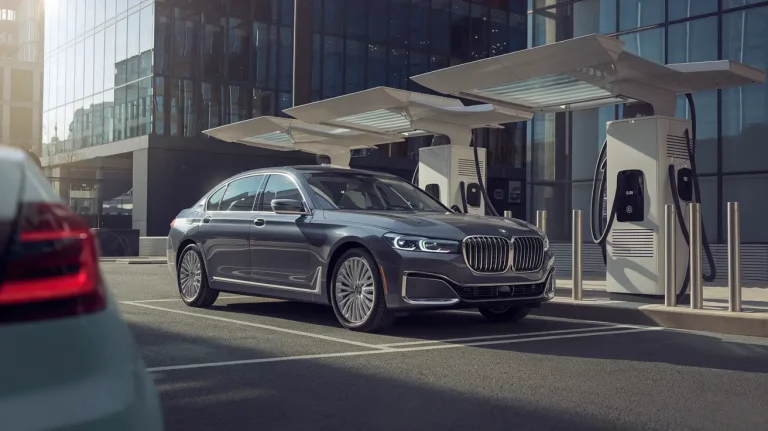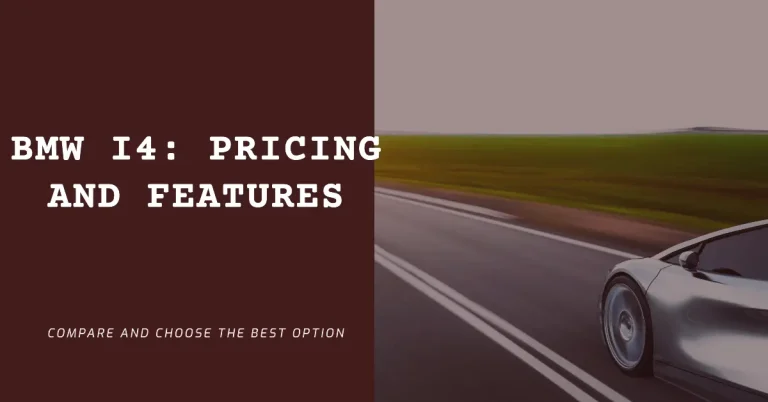What Does Ci Mean in BMW Model Names?
BMW has used complex naming conventions for their vehicles over the years. If you’re a BMW fan, you’ve probably come across mysterious models like 328Ci or 330Ci. But what does the “Ci” mean in BMW names?
The Ci designation has an interesting history and was used by BMW for a specific purpose. Let’s take a deep dive into what Ci stands for, when it was used, and why BMW eventually moved away from this naming format.
A Brief History of BMW Model Names
BMW has followed an intricate naming system for their cars since the 1970s. These naming schemes allowed BMW to pack a lot of information into a short model name.
Some elements commonly used in BMW names over the years:
- The first number indicated the model series (3, 5, 7 etc)
- The next two numbers showed the engine displacement
- A final letter showed the engine or body style:
- i = fuel injection
- e = efficient “eta” engines
- s = sport package
- x = all-wheel drive
- d = diesel
- L = long wheelbase
This naming convention made it easy for enthusiasts to decode the specs of any BMW with just a glance at the badge. However, it also resulted in complex names that were confusing for the average buyer.
When Did BMW Start Using Ci?
The Ci designation first began appearing around 1999 with the introduction of the E46 3 Series coupes and convertibles.
Previous 3 Series generations didn’t always distinguish coupes from sedans in the name. But the new E46 3 Series came in two distinct body styles – 4-door sedans and 2-door coupe/convertibles.
To differentiate these body styles, BMW started using:
- Ci for coupes and convertibles
- i for 4-door sedans
For example, the 1999 BMW 328Ci was the coupe version and the BMW 328i was the sedan.
This made it easy to tell the coupes and convertibles apart from the sedans at a glance.
What Does the C in Ci Stand For?
The C in Ci stands for “coupe.” It indicates that the model is a two-door coupe body style.
Since BMW used Ci for both coupes and convertibles, the C doesn’t directly stand for “convertible”. But it does signify a sportier two-door version rather than a practical 4-door sedan.
So if you see Ci in a BMW model name, you instantly know it’s a coupe or sleek convertible rather than a bulkier sedan.
What Does the i in Ci Stand For?
The i in Ci and other BMW names indicates the engine is fuel-injected. It differentiates fuel injected motors from older carbureted engines.
All modern BMWs have fuel injected engines. But BMW kept the i naming convention going even as carburetors became obsolete.
The i is there partly for legacy reasons dating back to when it provided meaningful info on the engine. But it’s also useful for distinguishing non-diesel models (gasoline fuel injected = i) from diesel models (d) .
So in a name like 328Ci:
- C = Coupe body style
- i = Fuel injected gasoline engine
- 328 = 3 Series with a 2.8L displacement
Two simple letters that packed a lot of meaning!
Ci vs iC – What’s the Difference?
You may sometimes see old BMW convertibles with iC rather than Ci in the name. What gives?
In the 1990s E36 generation, BMW used iC exclusively for convertibles in the US market:
- 328iC = E36 3 Series Convertible
- M3iC = E36 M3 Convertible
Meanwhile in Europe and most other markets, they used Ci for both coupes and convertibles.
This confusing split was thankfully short-lived. When the E46 debuted globally in 1999, BMW standardized on using Ci for both coupe and convertible models worldwide.
While you may occasional see iC on an older US market convertible, any E46 or later Ci model could be either a coupe or convertible.
Other Common BMW Codes and Naming Conventions
While Ci is the most recognizable code, BMW has used a number of other lettering schemes over the decades:
- i – Fuel injection on gasoline engines
- e – Eta engines optimized for efficiency
- s – Sport package with upgraded handling components
- x – All-wheel drive
- d – Diesel engine
- L – Long wheelbase model
- Z – Future/concept model code
Each of these single letter codes quickly conveyed detailed info about that BMW variant.
BMW also used some numeric and naming schemes:
- M – Motorsport division high performance model
- Alpina – Tuned by Alpina partnership
- Li – Special long wheelbase 7 Series sedan
- Ci – Coupe/convertible body style
So a name like 330Ci told you it was:
- 3 Series
- 3.0 liter engine
- Fuel injected
- Coupe/convertible body
Pretty impressive amount of info in just 5 characters!
Why Did BMW Use Ci for Coupes and Convertibles?
BMW first introduced the Ci naming convention in 1999 for specific reasons:
1. Distinguish Coupe/Convertible Models
Separating coupe and convertible models from 4-door sedans made the model range clearer to buyers.
You could instantly recognize a 328Ci as the sporty compact 2-door without having to see the car.
2. No Obvious Styling Distinction
Unlike today, 1990s BMW coupes and sedans didn’t always look radically different. The E46 coupe and sedan shared similar overall proportions and styling cues.
So while one was a coupe and one a sedan, they weren’t visibly distinct at a glance. The Ci clearly indicated which was which.
3. Differentiate Handling Characteristics
Ci coupes and convertibles also had a firmer sport suspension tune than sedans. The tighter handling matched the sportier looks of the two-doors.
So Ci designated models not just with two doors, but also a performance edge.
When Did BMW Stop Using Ci?
The Ci naming convention was short-lived, ending after the 1999-2006 E46 generation.
BMW introduced all-new 3 Series models in 2006. These new sedans and coupes looked radically different thanks to their sweeping exterior redesign.
Now that coupes could easily be distinguished from sedans visually, BMW no longer needed Ci to differentiate the body styles.
So the 2007 E92 coupe models became 335i and 335iC. No more Ci to separate coupes from sedans.
Potential Confusion and Incorrect Use of Ci
Since Ci specifically designated coupes and convertibles, it should never appear on BMW sedan models.
But there are examples of incorrect Ci badges ending up on the wrong bodies:
- Owners putting Ci badges on sedan models
- Wrong badges applied at the factory or dealership
- Ci badges reused from coupe models on sedans
This has led to cases of misbadged sedans creating confusion around what Ci means. But authentic factory models with Ci should only be on two-door models.
What Replaced Ci in Newer BMW Models?
Today’s BMW naming structure is much simpler than decades past. Model numbers generally follow:
[Series][Body Style][Drive type][Engine]
So a BMW 330i xDrive Coupe indicates:
- 3 Series
- Coupe body
- xDrive AWD
- 3.0L fuel injected engine
BMW decided to drop many traditional naming cues like Ci when the entire model lineup was redesigned in the mid 2000s.
Without historic codes like Ci, L, iC, or xi, the names became simpler and more intuitive. Ci was part of an older complex naming era that faded away.
Will BMW Ever Bring Back Ci?
It’s unlikely that BMW will revive the Ci designation anytime soon. The trend has moved towards simplification rather than complex naming conventions.
However, if coupes and convertibles ever diverge from sedans again in the future, BMW could decide to highlight the distinction once more.
If two-door and four-door models no longer share styling and handling attributes, a separator like Ci has logic again.
For now though, Ci remains a relic of 1990s and early 2000s BMW models before the naming schemes were streamlined. An interesting piece of history for BMW enthusiasts.
Conclusion
The Ci name on BMW coupes and convertibles seems cryptic today, but it served a specific purpose in the late 1990s and early 2000s. As coupes diverged from sedans in style and performance, BMW wanted to differentiate the unique two-door models.
Ci designated these sportier, more aggressive BMW variants with two doors, tighter handling, and individual styling. It immediately conveyed that a model was a coupe or convertible rather than a pragmatic 4-door sedan.
But as BMW coupes and sedans blended together again in the 2000s, Ci was no longer needed. BMW stripped away many complex naming conventions in favor of simplified, intuitive names.
So Ci became a relic of BMW history after being crucial for a short era. BMW still makes coupes and convertibles, but they no longer need their own special name.
For BMW enthusiasts, seeing that old Ci badge still evokes the distinctive compact two-doors of the early 2000s. A classic BMW name for a classic BMW era.







